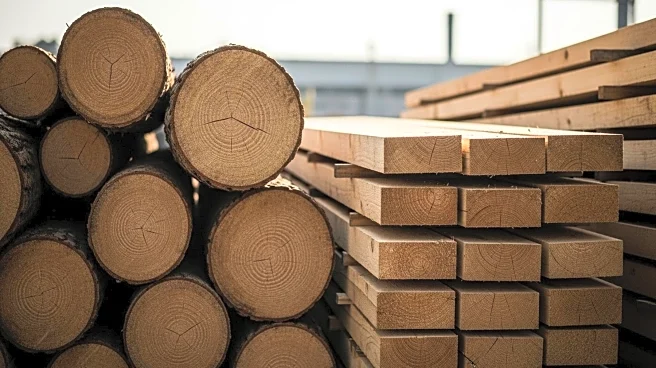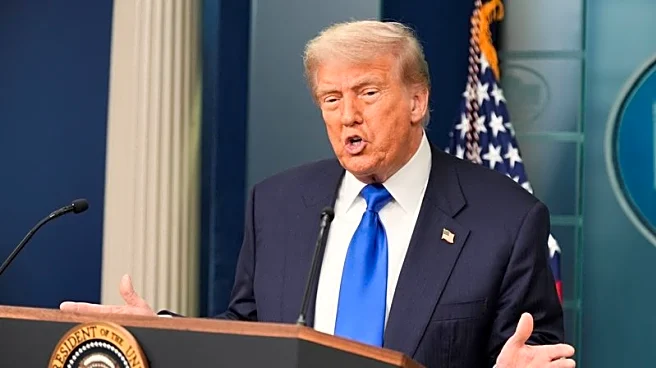What is the story about?
What's Happening?
President Trump has announced a new set of tariffs on imports of timber, lumber, and their derivative products into the United States. This decision follows a report from the Secretary of Commerce, which concluded that the current levels and conditions of wood product imports pose a threat to national security. The report highlighted that the U.S. wood industry is underdeveloped despite having ample raw materials and industrial capacity. The increasing reliance on foreign imports, coupled with foreign subsidies and unfair trade practices, has weakened the domestic wood industry, leading to mill closures and job losses. To address these issues, the President has imposed a 10 percent ad valorem duty on softwood timber and lumber and a 25 percent duty on certain upholstered wooden products. These measures aim to strengthen domestic supply chains, bolster industrial resilience, and encourage investment in the U.S. wood products industry.
Why It's Important?
The imposition of tariffs on wood imports is significant as it addresses the vulnerabilities in the U.S. wood products industry, which is crucial for national defense and critical infrastructure. By reducing dependency on foreign imports, the tariffs are expected to enhance the economic stability and industrial resilience of the United States. This move is likely to create high-quality jobs and increase domestic capacity utilization, allowing the U.S. to meet its national-security needs and demands for wood products. Additionally, the tariffs are intended to encourage capital investment and drive innovation within the industry, potentially leading to increased exports and economic benefits. However, these tariffs may also lead to higher costs for consumers and businesses reliant on imported wood products.
What's Next?
The Secretary of Commerce will continue to monitor wood product imports and provide updates to the President. The U.S. Trade Representative is tasked with negotiating agreements with foreign trading partners to address the national security threat posed by these imports. The tariffs are set to increase in January 2026 unless agreements are reached. The administration will also establish processes to identify and impose tariffs on additional wood products if necessary. These actions are part of a broader strategy to ensure the U.S. wood industry can support national defense and critical infrastructure needs.
AI Generated Content
Do you find this article useful?














